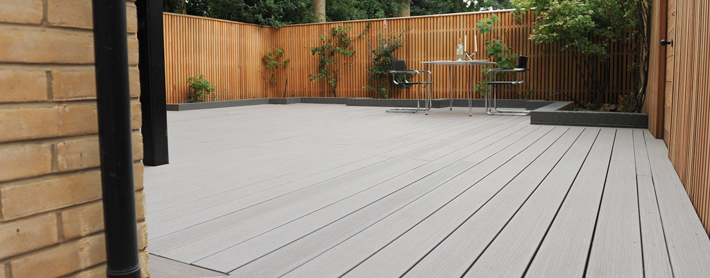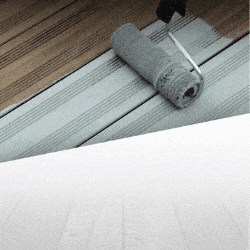Does Composite Decking Need to be Spaced and Sealed?
How do you maintain composite decking?
Composite decking is a popular choice for a stylish and hard-wearing garden deck; as it combines the attractive, natural look of wood with the durability and low-maintenance of a manufactured material. If you’re considering laying a composite deck, it’s important to think about the ways the material differs from normal wood. Importantly, does it need to be spaced and sealed in the same way? Here’s what you need to know.

End Spacing
Like wooden boards, composite decking material expands and contracts depending on the weather and temperature. This will be particularly apparent at extremes of temperatures, during winter and summer, depending where you live. However, these variations are more along the length of the boards than with wood, and less across the width. It’s important to take this into consideration when planning your deck; and the composite material you choose should come with detailed instructions on how to account for these changes and plan the proper spacing, along with a chart so you can easily work it out based on the expected temperatures where you are.
Side Spacing
Side spacing, or gapping as it’s sometimes known, is also an essential consideration when using composite decking material. The correct space size between boards must be left to avoid problems when the material expands or contracts; and to allow for water run-off. Again, when you buy your composite material, it will include details on how to calculate how much of a space you need to leave. If there are no instructions or you’re in any doubt, contact the manufacturer or supplier; who will be able to give you help and advice.
Joist Spacing
The required joist spacing for composite decking is different to that of wood, as it is a more flexible material. To avoid problems down the line, make sure you’re using measurements appropriate to the material you’re using. If you’re replacing existing wood decking with composite material, take into account the different joist spacing requirements and adjust as necessary.
Should It Be Sealed?
One of the main benefits of composite decking is that it is generally resistant to weathering, mould, insects and other factors that can easily damage wood decking if not properly treated. Because of these properties, composite decking material absolutely does not need to be annually painted, stained or sealed like wood does, and will maintain its strength and nice appearance simply with cleaning when necessary. TimberTech supply a wide range of good quality composite decking. It will come with a warranty that reflects the confidence of the manufacturer in its durability and low maintenance requirements.
However, some owners of composite decking do choose to seal it for extra peace of mind and to reduce the frequency of cleaning even further, therefore potentially making it even more low maintenance in the long run. If you do decide to seal composite decking, make sure you use a suitable sealant to do so, as some brands that are suitable for ordinary wood could damage composite material. Water-based sealer is best as opposed to the solvent type, which can actually increase the risk of mould. Check the packaging thoroughly for any warnings about its suitability, or to be completely confident; look out for a brand specifically made for composite decking.



